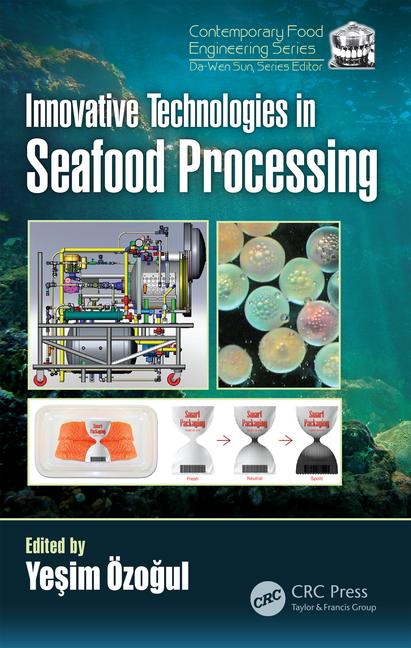Information Technologies: Real data, real time
RFID, Web and mobile technologies strengthen plant floor production monitoring.

Editor’s note: To learn more about developments in production monitoring, Refrigerated & Frozen Foods contacted Patrick Pilz, a frequent industry speaker on the topic. Pilz is president and chief executive officer for CSB-System International, San Diego.
Refrigerated & Frozen Foods: Please tell us about some recent improvements in production process monitoring technologies.
Patrick Pilz: I’d say that process monitoring has not improved as much in terms of new technology. Rather, the significant change has been that several technologies that enhance productivity have become cheaper during the past several years. This leads to faster return on investment and better business cases.
That said it is important to note the spread of communication capabilities, especially those involving the Internet. Now, monitoring information is much more accessible and available to management.
R&FF: What are food processors’ concerns about this technology?
Pilz: In general, I think execution is the biggest concern with any technology implementation. Although many manufacturers see the benefits of technology, they also see the challenges ahead when it comes to executing these complex projects.
R&FF: Where have suppliers most improved the data capture process?
Pilz: I think the biggest single improvement involves radio frequency identification (RFID). It has the most potential to make data acquisition more accurate and it requires less labor. Meanwhile, the costs of this technology are dropping - drastically - month over month. If you look at any plant, you’ll see a lot of marking, reading and data allocation to products flowing through production.
Of course, many companies are thinking about the external applications of RFID - based on requirements from Wal-Mart, Albertsons and some of the other larger retailers. However, they forget about the internal application of RFID.
R&FF: Where have you seen the biggest improvements in giving plant managers more options to view and/or use data?
Pilz: As mentioned earlier, I’d say it has to do with the available real-time communication technologies that link plant managers - wherever they are - to action on the plant floor. Today, if there’s a production or quality issue, it’s very feasible to send a real-time notification to a plant manager’s mobile device. In fact, processors now may expand their internal networks and link all the appropriate managers to the information they desire and need. We call this concept MERP (for mobile ERP).
R&FF: Any new developments linking production monitoring to a machine’s preventive maintenance?
Pilz: Of course the purpose of preventive maintenance is to make and keep equipment reliable and available at the most economic cost. I’d say the integration of plant monitoring data into that loop would help to predict the timing of maintenance orders, but the economic benefit is not as big - when compared to good management of a spare-parts inventory. There are benefits related to integrating the counters and readers of production monitoring into the maintenance system, especially when assets are not consistently utilized. I think this benefit varies on a case-by-case basis.
R&FF: Let’s look ahead another five years. In what new ways might process monitoring technologies still improve?
Pilz: Five years from now, the Worldwide Web will be a legacy network. I think that the digital convergence will lead to further integration of currently available technology. I also think that one of the next breakthrough innovations will involve a combination of RFID and global positioning satellite (GPS) technology. The next generation of GPS systems will provide a location detail of about 1 foot and will work in closed concrete buildings as well as outside.
Projecting this forward, you can argue that a lot of data acquisition points will become obsolete. That’s because you could identify and locate product - as well as production assets - at any time without actually capturing data. This might take a little longer than five years, but I’m 100 percent convinced this will be the next big shift in monitoring anything that happens in a plant.

Patrick Pilz
Editor’s note: To learn more about developments in production monitoring, Refrigerated & Frozen Foods contacted Patrick Pilz, a frequent industry speaker on the topic. Pilz is president and chief executive officer for CSB-System International, San Diego.
Refrigerated & Frozen Foods: Please tell us about some recent improvements in production process monitoring technologies.
Patrick Pilz: I’d say that process monitoring has not improved as much in terms of new technology. Rather, the significant change has been that several technologies that enhance productivity have become cheaper during the past several years. This leads to faster return on investment and better business cases.
That said it is important to note the spread of communication capabilities, especially those involving the Internet. Now, monitoring information is much more accessible and available to management.
R&FF: What are food processors’ concerns about this technology?
Pilz: In general, I think execution is the biggest concern with any technology implementation. Although many manufacturers see the benefits of technology, they also see the challenges ahead when it comes to executing these complex projects.
R&FF: Where have suppliers most improved the data capture process?
Pilz: I think the biggest single improvement involves radio frequency identification (RFID). It has the most potential to make data acquisition more accurate and it requires less labor. Meanwhile, the costs of this technology are dropping - drastically - month over month. If you look at any plant, you’ll see a lot of marking, reading and data allocation to products flowing through production.
Of course, many companies are thinking about the external applications of RFID - based on requirements from Wal-Mart, Albertsons and some of the other larger retailers. However, they forget about the internal application of RFID.
R&FF: Where have you seen the biggest improvements in giving plant managers more options to view and/or use data?
Pilz: As mentioned earlier, I’d say it has to do with the available real-time communication technologies that link plant managers - wherever they are - to action on the plant floor. Today, if there’s a production or quality issue, it’s very feasible to send a real-time notification to a plant manager’s mobile device. In fact, processors now may expand their internal networks and link all the appropriate managers to the information they desire and need. We call this concept MERP (for mobile ERP).
R&FF: Any new developments linking production monitoring to a machine’s preventive maintenance?
Pilz: Of course the purpose of preventive maintenance is to make and keep equipment reliable and available at the most economic cost. I’d say the integration of plant monitoring data into that loop would help to predict the timing of maintenance orders, but the economic benefit is not as big - when compared to good management of a spare-parts inventory. There are benefits related to integrating the counters and readers of production monitoring into the maintenance system, especially when assets are not consistently utilized. I think this benefit varies on a case-by-case basis.
R&FF: Let’s look ahead another five years. In what new ways might process monitoring technologies still improve?
Pilz: Five years from now, the Worldwide Web will be a legacy network. I think that the digital convergence will lead to further integration of currently available technology. I also think that one of the next breakthrough innovations will involve a combination of RFID and global positioning satellite (GPS) technology. The next generation of GPS systems will provide a location detail of about 1 foot and will work in closed concrete buildings as well as outside.
Projecting this forward, you can argue that a lot of data acquisition points will become obsolete. That’s because you could identify and locate product - as well as production assets - at any time without actually capturing data. This might take a little longer than five years, but I’m 100 percent convinced this will be the next big shift in monitoring anything that happens in a plant.
Looking for a reprint of this article?
From high-res PDFs to custom plaques, order your copy today!








